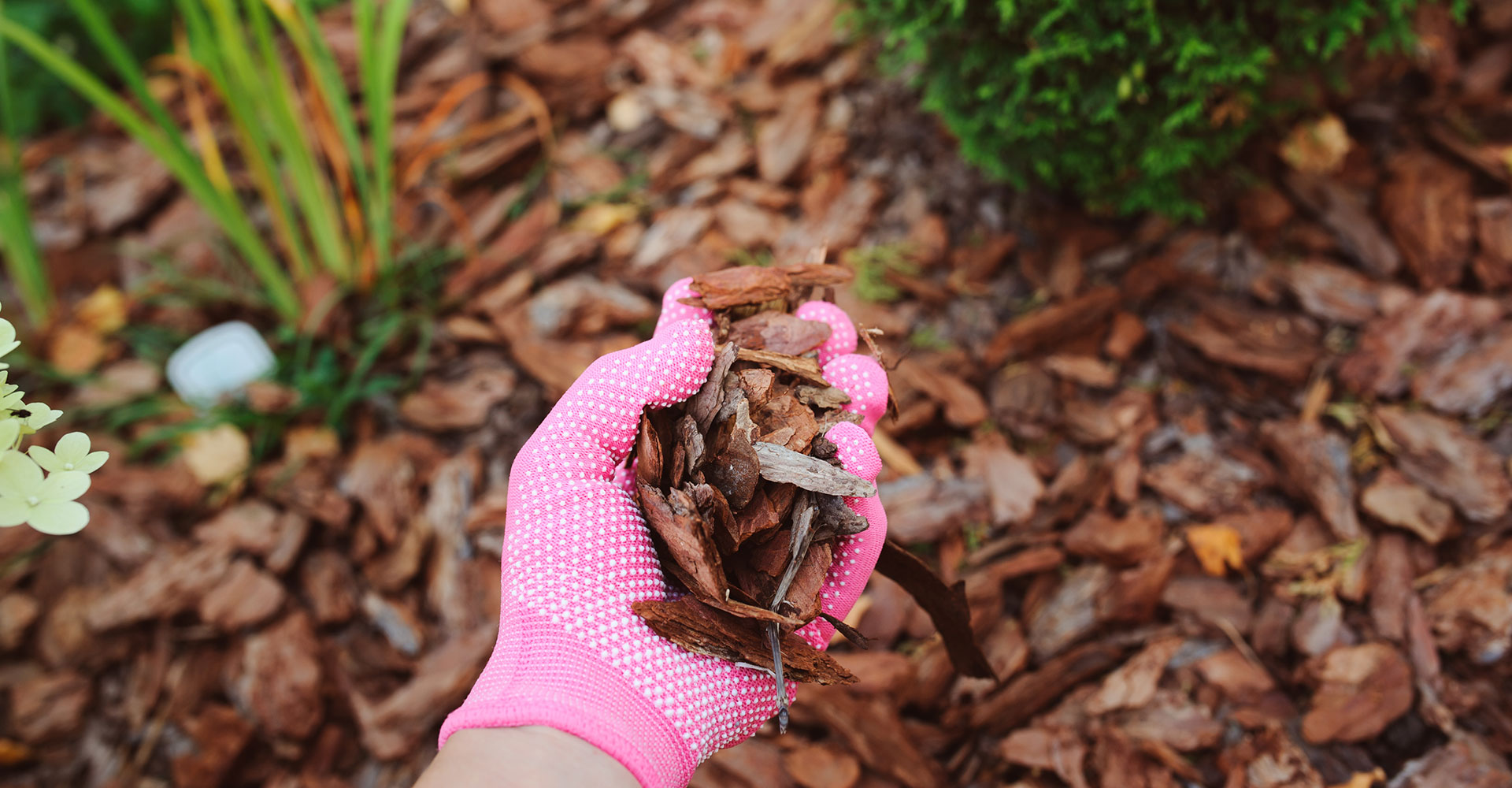Winter Mulch Tips

Now that we have gotten several hard frosts and our landscape plants are more hardened off (acclimated to colder temperatures), and leaves have mostly all fallen, it’s time to consider applying mulch! Keep reading for tips…
Why is Winter a good time to mulch?
Think of mulch as a blanket for your landscape plants; they benefit from it the same way! Here in Arkansas, we experience winter a bit differently than northern states that have more consistently cold weather. Our winters come in waves of alternating warm and cold snaps. This can cause potentially damaging freeze/ thaw patterns that stress plants. A layer of mulch helps regulate soil temperatures, which means lessening the gap between the highs and lows for plant roots.
We often think of regulating soil moisture during the hot summer months but it’s also important during winter months, especially for broadleaf evergreens. These plants tend to be more thirsty than needleleaf evergreens and mulch helps conserve moisture, keeping it more readily available for use when needed. This is a good time to note that spraying Wilt Stop on foliage also helps plant retain moisture, reducing freeze damage. Camellias grown in our area benefit from winter applications of this foliar spray.
One more tip, just because we can say it enough, plants do not respond well to freezing dry…plant cells rupture more readily when plants are not hydrated. If we are getting extremely cold weather, and we haven’t had a recent rain event, check the soil moisture level and water as needed, ideally 48 hours before the weather is scheduled to arrive. This gives the plant time to absorb and move the water throughout the plant.
Nevermind… we clearly have more to say! Moist soil conducts more heat vertically than dry soil, meaning that dry soil warms and cools faster than soil with some moisture. Just one more way that adding mulch helps regulate temperatures, this one through regulating soil moisture.
We haven’t talked yet about aesthetics, and mulch certainly makes a space look refreshed and well maintained!
Is it too late?
Nope. As a rule of thumb, January and February are often our coldest winter months. It’s good to wait until we have experienced a few hard frosts so plants recognize that it’s time to enter dormancy. If mulch is applied too heavy and too early in the fall, the signals that it’s time to go dormant can be delayed.
Is Winter mulching different?
While the reasons for mulching are a bit different, the application isn’t that different. Mulch depth should be around 3 inches, in general. Avoid placing mulch against plant base; mulch against plant trunks or branches results in moisture up again those spaces, and also, may increase pest issues. Maintain several inches out from the base of the plant as a mulch free zone.
There are many different kinds of mulch to choose from; and some knit together more closing, holding more moisture in the soil. Because of this, and increased rainfall, accompanied by less evaporation and water usage plant plants, avoid heavy mulch on plants prone to root rot when soil stays too soggy. These would include perennials like sage, sedum, rudbeckia and coneflowers. For these, use a light mulch that won’t impact air flow too much, such as a very thin layer (just enough to cover soil surface) of pine bark mulch, or pine needles. Our bagged Organic Compost, which is very fine pine bark mulch is a good option. For these plants, you are just adding mulch for aesthetic reasons, as opposed to for soil moisture regulation.
The Good Earth offers a variety of mulches, in bags or by the cubic yard. And yes, we offer delivery services! Not sure how much you need? Check out our Mulch Calculator.